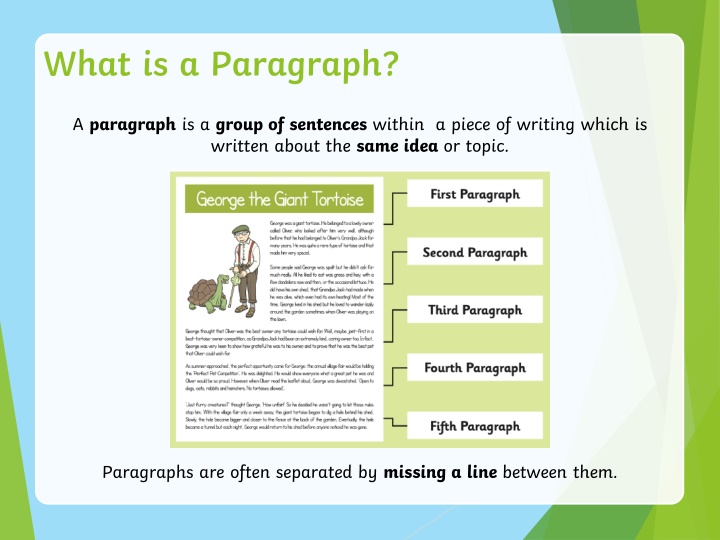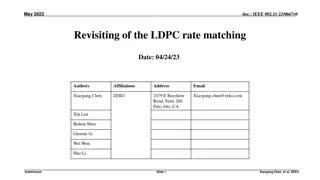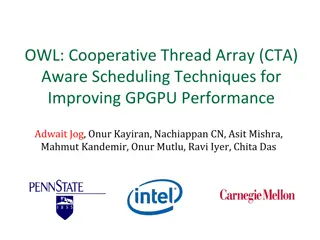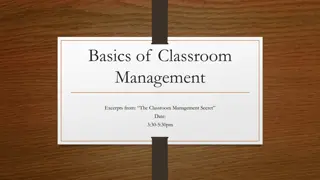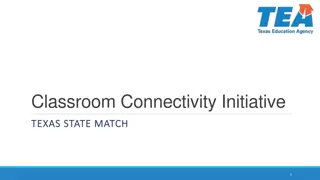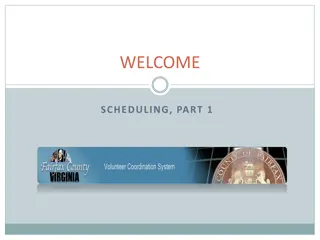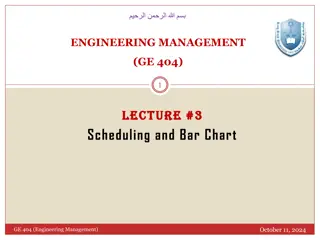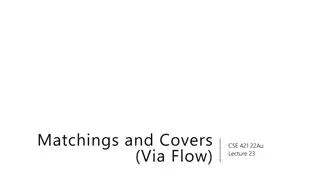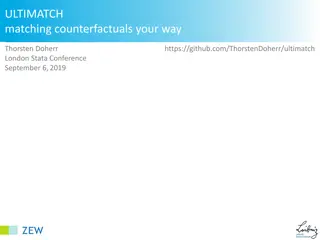Bipartite Matching in Classroom Scheduling
Bipartite matching is used to efficiently schedule courses in classrooms with specific requirements. The goal is to find a maximum matching, where each course is assigned to a suitable classroom. Greedy algorithms may fail, leading to the need for augmenting paths in optimizing the scheduling process.
Download Presentation

Please find below an Image/Link to download the presentation.
The content on the website is provided AS IS for your information and personal use only. It may not be sold, licensed, or shared on other websites without obtaining consent from the author.If you encounter any issues during the download, it is possible that the publisher has removed the file from their server.
You are allowed to download the files provided on this website for personal or commercial use, subject to the condition that they are used lawfully. All files are the property of their respective owners.
The content on the website is provided AS IS for your information and personal use only. It may not be sold, licensed, or shared on other websites without obtaining consent from the author.
E N D
Presentation Transcript
What is a Paragraph? A paragraph is a group of sentences within a piece of writing which is written about the same idea or topic. Paragraphs are often separated by missing a line between them.
What is a Paragraph? Paragraphs are used to show when a writer has changed time, place or argument. When they do this, they will start a new paragraph. In a non-fiction text, we usually see a subheading before each paragraph, telling us what it will be about.
Why Do We Use Paragraphs? Why do you think we use paragraphs in a piece of writing? Mind map your ideas as a group. To show the author has changed time, place or argument. To explain or describe an idea in detail. Paragraphs To organise what is being explained in a text. To group ideas together. To make the text easier to read.
Sorting Ideas in Topics Can you read the sentences below and group them into sentences which talk about the same idea or topic? Castles are a type of home that were built to protect the people inside. People who lived in castles included royalty, noble people and soldiers. You can still visit many castles today. Why not take a tour? Everything about a castle was made that way to keep the people inside safe. Famous castles include Windsor Castle, Dover Castle and Kenilworth Castle. Castles could be very crowded places to live because there were a lot of people inside.
Sorting Ideas in Topics Can you read the sentences below and group them into sentences which talk about the same idea or topic? Castles are a type of home that were built to protect the people inside. about castles as protection. These two sentences are Everything about a castle was made that way to keep the people inside safe. Castles could be very crowded places to live because there were a lot of people inside. These two sentences are about the people who lived in castles. People who lived in castles included royalty, noble people and soldiers. Famous castles you can visit include Windsor Castle, Dover Castle and Kenilworth Castle. These two sentences are about castles you can visit. You can still visit many castles today. Why not take a tour?
Using Paragraphs The following text does not have paragraphs to sort the ideas. Can you identify where the topic changes? Frogs are amphibians, which mean that they can live both on land and in the water. They are cold-blooded which means that their bodies are the same temperature as the air. When they get cold, they need to lie in the sun to warm up and when they get too warm, they need to go into the water or find a shady place to cool down. Frogs are found all over the world. They are found in every climate and on all continents except Antarctica. They are often found near any source of fresh water but they prefer water which does not move very quickly. Smaller frogs eat flies and insects, especially crickets. Larger frogs can eat mice! Frogs do not need to drink because they absorb water through their skin. How many paragraphs could we split this piece of text into?
Using Paragraphs Were you able to identify where the topic changes? Let s organise this text into paragraphs. Frogs are amphibians, which mean that they can live both on land and in the water. They are cold-blooded which means that their bodies are the same temperature as the air. When they get cold, they need to lie in the sun to warm up and when they get too warm, they need to go into the water or find a shady place to cool down. //Frogs are found all over the world. They are found in every climate and on all continents except Antarctica. They are often found near any source of fresh water but they prefer water which does not move very quickly. // Smaller frogs eat flies and insects, especially crickets. Larger frogs can eat mice! Frogs do not need to drink because they absorb water through their skin.
Frogs are amphibians, which mean that they can live both on land and in the water. They are cold-blooded which means that their bodies are the same temperature as the air. When they get cold, they need to lie in the sun to warm up and when they get too warm, they need to go into the water or find a shady place to cool down. Frogs are found all over the world. They are found in every climate and on all continents except Antarctica. They are often found near any source of fresh water but they prefer water which does not move very quickly. Smaller frogs eat flies and insects, especially crickets. Larger frogs can eat mice! Frogs do not need to drink because they absorb water through their skin.
Subheadings in Non-Fiction Texts As this is a non-fiction text, can you think of a good subheading to tell the reader what each paragraph is about? _______________________ Frogs are amphibians, which mean that they can live both on land and in the water. They are cold-blooded which means that their bodies are the same temperature as the air. When they get cold, they need to lie in the sun to warm up and when they get too warm, they need to go into the water or find a shady place to cool down. _______________________ Frogs are found all over the world. They are found in every climate and on all continents except Antarctica. They are often found near any source of fresh water but they prefer water which does not move very quickly. _______________________ Smaller frogs eat flies and insects, especially crickets. Larger frogs can eat mice! Frogs do not need to drink because they absorb water through their skin.
What are frogs? Frogs are amphibians, which mean that they can live both on land and in the water. They are cold-blooded which means that their bodies are the same temperature as the air. When they get cold, they need to lie in the sun to warm up and when they get too warm, they need to go into the water or find a shady place to cool down. Where are frogs found? Frogs are found all over the world. They are found in every climate and on all continents except Antarctica. They are often found near any source of fresh water but they prefer water which does not move very quickly. What do frogs eat? Smaller frogs eat flies and insects, especially crickets. Larger frogs can eat mice! Frogs do not need to drink because they absorb water through their skin.
How would it work in newspapers? What is the job of the introduction of a newspaper? How could we use this to help us organise our main piece of writing?
